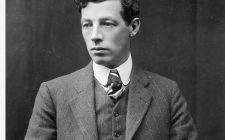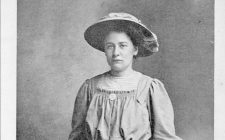
Adela Pankhurst
Small in stature and not in the best of health, Adela Pankhurst (1885-1961) was nonetheless a compelling speaker and tireless worker in the anti-war campaigns in Australia during the First World War. She was the youngest daughter of Emmeline Pankhurst who along with her daughters Sylvia and Christabel, founded the Women's Social and Political Union (WSPU) the leading militant organisation campaigning for women’s suffrage in the UK. Following a rift between the Pankhurst women because of opposing political opinions, Adela sailed to Australia in April 1914 never to see her mother or sisters again. Adela joined Victoria’s leading suffragist Vida Goldstein's organisation, the Women's Political Association and helped her set up branches of the Women’s Peace Army. During the two anti-conscription referendums, Adela campaigned almost daily. Adela’s fiercely patriotic mother Emmeline, denounced her daughter in a telegram dated 8 March 1917 to Prime Minister Billie Hughes. In August 1917, Adela was arrested for obstructing the carriage way during a demonstration against wartime food prices outside Melbourne’s Federation Parliament House. While on remand from a gaol sentence Adela married unionist Tom Walsh the following month forestalling deportation. After the war she continued her life of activism becoming a leading member of the communist party in Australia but later withdrew, launching the Australian Women’s Guild of Empire, an organisation dedicated to fighting communism, upholding Christian ideals and safeguarding the family.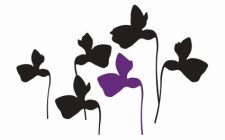
Angas, George Fyfe
George Fife Angas (1789-1879) was an early colonist who played a key role in the establishment of the South Australian colony. Angas founded the South Australian Company, formed to establish the new colony, and later served as a member of South Australia’s Legislative Council.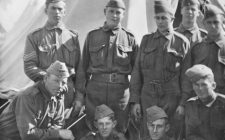
Blackburn, Arthur
Blackburn was a fresh faced, 25 year old solicitor who entered the First World War as a private and ended his military career as a distinguished Commissioned Officer. He was the first South Australian to receive a Victoria Cross for his bravery during the Battle of the Somme. In this action he led 50 men in repeated attacks on enemy trenches in the French town of Pozieres. He went on to fight in the Second World War, and was created a Commander of the Order of the British Empire and a Companion of the Order of Saint Michael and Saint George.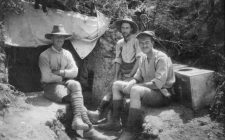
Avery, Louis Willyama
Louis Willyama Avery was born on July 15, 1891, and moved to Adelaide from Broken Hill for his education. He attended St Peter’s College and later the SA School of Mines, where he studied Engineering. He was working in Broken Hill when war was declared, and he decided to enlist for service in August 1914. He was a member of the 3rd Field Engineers, A.I.F, 1st Australian Division, 3rd Brigade, and landed at Gallipoli on 25 April, 1915. Later in the war he fought in Europe, being awarded a Military Medal in 1917. Following his time in the Dardanelles, Avery was hospitalised suffering from typhoid fever, and letters from his father to military administration show how difficult it was for families in Australia to find out information about the health of soldiers overseas.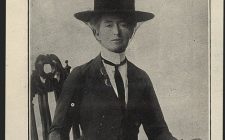
Bates, Daisy
Daisy Bates (1859-1951) was an Irish-born, self-taught journalist and anthropologist. Her Adelaide lectures for the Royal Society of South Australia during September 1914 were based on her 15 years living with the ‘natives’ throughout Western Australia. Aided by a map and lantern slides, her talks concentrated on the customs and kinships of the tribes with whom she had lived and tended. Appointed the first woman Honorary Protector of the Aborigines in 1912, her home was a tent at Eucla. Travelling cross-country by a camel-drawn buggy and thence steamer, her 1914 Adelaide visit was firstly prompted by the Royal Commission into the treatment of Aborigines. During sessions at Parliament House she requested that she might continue her work as Protector of Aborigines in South Australia. She believed that the Aborigines were a dying race but was intent on making their passing easier. She also attended meetings with leading scientists of the Commonwealth organised by the British Association for the Advancement of Science in Adelaide, Sydney and Melbourne. She was highly respected in academic circles but also a popular figure in the press for not only her unusual lifestyle but also commitment to an Edwardian style of dress, gloves, coiffure, hat and veil.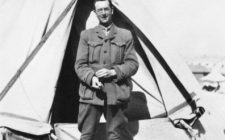
Bean, Charles
Official war historian C.E.W. Bean was born in New South Wales, but completed his education in England. He returned to Australia in 1904 and began to practice law, but opted for a career in journalism instead, in 1908. In September 1914 he won a ballot held by the Australian Journalists Association to become Australia’s official war correspondent, narrowly defeating Keith Murdoch. He travelled with the first contingent of the AIF to Egypt and landed at Gallipoli on 25 April. During his time with the troops, he became a passionate advocate for the idea of a museum to remember the war, and became a driving force behind the creation of the Australian War Memorial in Canberra. He was also responsible for writing the detailed history of Australia’s involvement in the War, which is available online at the Australian War Memorial site. http://www.awm.gov.au/histories/first_world_war/
Birtles, Francis
Francis Edwin Birtles (1881-1941) was a Victorian overlander well known for his cycling and motor car adventures. During the early 1900s he set numerous records and drew much attention for his cycles between Australia’s capital cities. Following his adventures, Birtles published the story of his journeys titled Lonely Lands, which included photographs he had captured along the way. Birtles next set about adventuring in the motor car. During these cross-country car adventures, he was able to capture fantastic footage of the Australian countryside. In 1912 Birtles was the first to travel from one side of the continent to the other in a single-cylinder Brush car. Then, in 1924, Birtles set the overland speed record for his trip from Darwin to Adelaide. Birtles’ famous Bean 14 car, used for numerous cross country adventures, is still on display at the National Museum of Australia in Canberra.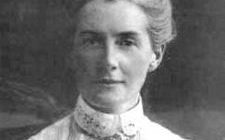
Cavell, Edith
Nurse Edith Cavell was nursing in Belgium when the war broke out. The hospital she had been working in was converted into a Red Cross hospital for wounded soldiers of all nationalities. Many of the captured Allied soldiers who were treated at Berkendael subsequently succeeded in escaping - with Cavell's active assistance - to neutral Holland. Cavell was arrested on 5 August 1915 by local German authorities and charged with having personally aided in the escape of some 200 such soldiers. Kept in solitary confinement for nine weeks the Germans successfully extracted a confession from Cavell which formed the basis of her trial. The sentence was carried out on 12 October 1915.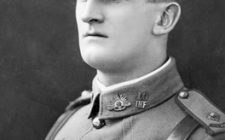
Churchill-Smith, James
James Churchill-Smith enlisted in May 1915, in Adelaide. He was born in October 1894, and was educated at Norwood Public School before going to the School of Mines. He was initially assigned to the 10th Infantry Battalion before joining the 50th, when the AIF was doubled in February 1916.
Cook, Joseph
Joseph Cook was the sixth Prime Minister of Australia, elected in 1913. He was the son of an English coalminer and grew up in poverty. He began his political career aligned with Labor, but internal disagreements saw him serve later as an independent Labor member. However, it was as leader of the conservative Liberal Party that he won government in June 1913 by the narrowest of margins. The resulting instability allowed Labor to force a double dissolution, and new elections were held in September 1914. Labor won comfortably.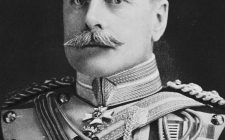
Douglas Haig
Field Marshal Douglas Haig (1861-1928) was the commander of the British Expeditionary Force on the Wester Front from the end of 1915 until the end of the First World War. He oversaw the Battle Of The Somme and Third Battle Of Ypres. While many in Britain genuinely mourned his passing at the time, he was later to become known as a butcher, whose leadership cause millions of casualties in costly but epic offensives. He served in Sudan, South Africa and India before the First World War. Arguably one of the most well-known portrayals of Haig came in season four of the BBC comedy series “Blackadder”, with the commander played by Geoffrey Palmer of “As Time Goes By” fame.
Cooper, Ethel
Caroline Ethel Cooper (1871-1961) was something of an eccentric – for starters, she had a pet crocodile called Cheops which she kept in her apartment, and lived a very independent lifestyle. A proficient musician, she formed her own Women’s Orchestra in Adelaide before the outbreak of the war. A regular visitor to Germany, she was living in Leipzig when the war broke out. She remained in Germany for the duration of the war, writing a letter each week to her sister Emmie in Adelaide. Although these letters could not be posted during the war, the first 52 were smuggled to Switzerland and posted from Interlaken and the remainder were hidden and sent from England in 1918. Although her premises were often raided by police and she was forbidden from leaving several times during the war, she was not detained and had a pass that stated her presence was ‘agreeable to the military authorities’. She returned to Adelaide for a few years after the war, but returned to Europe where she participated in relief work. She settled in Adelaide in 1936, with her then-widowed sister.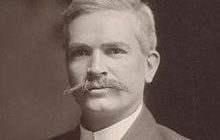
Fisher, Andrew
Of Scottish heritage, and a former miner and trade unionist, Andrew Fisher served as Prime Minister of Australia three times, in 1908–09, 1910–13 and 1914–15. During his second term he was instrumental in the passing of legislation that saw the introduction of Australia’s first national old-age pension scheme. Fisher was also PM when construction began on the Trans-Australian Railway – originally running the “Great Western Express” and nowadays the “Indian-Pacific” – and the Australian Capital Territory was founded. He won the election in 1914 just six weeks after war broke out across Europe. The new Labor Government was thus immediately consumed with devising defence measures and planning Australia’s War effort in support of the Empire. It was Fisher’s responsibility to despatch the troops to Europe at the beginning of the war, and as there were reports of German cruisers, he refused to allow the convoy to sail until it had been fully assembled. He also made the commitment that Australia would finance its troops itself. He had hoped to do this by raising the funds through taxes and duties, but this was not possible, and he negotiated a loan from Britain. This debt proved to be an ongoing burden to Australia in the 1930s. On 27 October, 1915 Fisher resigned as Prime Minister due to ill health and was succeeded by his deputy, William Morris (Billy) Hughes.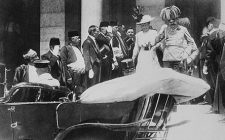
Franz Ferdinand
Franz Ferdinand (18 December 1863-28 June 1914) was the Heir-presumptive to the Austro-Hungarian Empire. He was married to Sophie, the Duchess of Hohenberg and together they had three children. On Sunday, 28 June 1914, while observing military manoeuvres in Sarajevo, the capital of the Austro-Hungarian province of Bosnia and Herzegovina, Franz and his wife were shot dead. Their assassin was 19 year old Gavrilo Princip; a member of Young Bosnia which consisted of Bosnian, Croatian and Serbian men opposed to Austro-Hungarian rule over the south Slavic regions of the Empire. The assignation was organised by a secret military society formed by Serbian army officers called The Black Hand. It was hoped that this act of terror would free all southern Slavs from Austro-Hungarian rule. However, the assassination forced the Empire to demand, among other things, that Austro-Hungary be permitted to conduct their own investigation on Serbian soil. This became known as the July Ultimatum. Viewing this as a threat to their national sovereignty Serbia refused. As a result, having gained unconditional support from Germany, the Austro-Hungarian Empire declared war on Serbia. This set the European alliance system in motion splitting the major powers into two sides: The Central Powers; Germany, Austro-Hungary and the Triple Entente; France, Russia and, the United Kingdom of Great Britain and Ireland.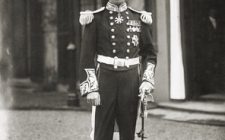
Governor Galway
Sir Henry Lionel Galway (1859-1949) was the Governor of South Australia from 1914 until 1920. Described as a controversial figure, Governor Galway advocated for conscription, supported gambling and wanted to end the White Australia policy in order to bring in much needed labour from Asia into the Northern Territory. Australia’s strides towards equality failed to align with Galway’s conservative outlook, seeing him oppose the South Australia’s education system and women’s enfranchisement. As a sign of protest against his conservative views, the Labor parliamentarians decided to boycott Galway’s farewell. Although Governor Galway was socially conservative, his wife, Lady Marie Carola Franciska Roselyn Galway, was tireless in her fundraising and social efforts throughout the First World War. Nonetheless, Sir Henry Galway is still a revered Governor, and praised for his involvement during wartime.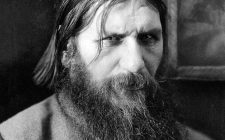
Grigori Rasputin
Grigori Rasputin (1869-1916) was, depending on your point of view, a venerated holy man or a meddling monk. Born in Siberia, Rasputin was a leading figure in early 20th-century Russian society, despite never holding a formal position in the Orthodox Church. He managed to make his way into the inner circle of Tsar Nicholas Romanov II, partly based on his presumed healing abilities with Prince Alexei’s haemophilia. Some in the royal household considered him a visionary and prophetic mystical figure, while others thought him nothing more than a liar and conman. Rasputin was eventually assassinated via a gunshot wound to the head by people objecting to his government influence. Some six decades on, his life was immortalized in a completely different way – as a bouncy disco single by West Indian group Boney M, released in 1978. Sample chorus lyrics: “Ra-ra-Rasputi, Russia's greatest love machine.” Legendary, even beyond the grave.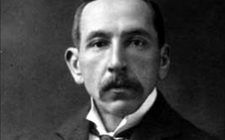
Hughes, Billy
Billy Hughes migrated to New South Wales from Britain in 1884, when he was 22. He worked as a labourer and a cook before opening a small mixed shop. He became a union organiser and entered politics in 1894. He studies law and was admitted to the bar in 1903. A supporter of Federation, he was elected to federal Parliament in 1901. He was Attorney General in Andrew Fisher’s Labor government. When Fisher resigned in October 1915, Hughes took over at Prime Minister.
King Edward VII
King Edward VII (1841-1910) was the King of Great Britain and Ireland from 1901 to 1910. He married Princess Alexandra of Denmark, but was known for having many mistresses. As an advocate for friendly international relations, King Edward VII visited many continental capitals to establish relationships with other European powers.
Kingston, Charles Cameron
Charles Cameron Kingston (1850-1908) was an Adelaide-born lawyer and politician who held office as Premier of South Australia from 1893-1899. During his time as Premier, Kingston introduced much legislation set on improving the lives of workers and women, and was also a staunch supporter of the White Australia Policy.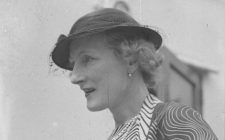
Lady Galway
Lady Marie Carola Franciska Roselyne Galway (1876-1963) was the wife of South Australia’s 17th Governor Sir Henry Galway. Newly married in August 1913, they arrived in Adelaide to take up office the following April. Within four months war was declared. Lady Galway became a tireless and compassionate charity worker, travelling widely, writing numerous letters and raising over a million pounds during the First World War. As well as founding the South Australian division of the Red Cross, she also directed the Belgian Relief Fund and was the founding president of the League of Loyal Women, an organisation that supplied comforts for servicemen. She did much to raise the status of women in public life. Her husband’s opinions and often tactless remarks were sometimes controversial throughout his governorship but by contrast, Lady Galway was popularly received. Charming, well read and an excellent public speaker, she received many accolades from South Australians prior to her return to England in 1919. This is remarkable considering she was half German - her mother being a Bavarian countess, her father an Irish baronet – and also a Catholic living in what was then Australia’s most Protestant state.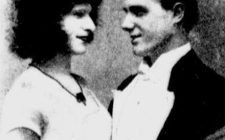
Kemble, Lindsay
19-year-old Burra-born Lindsay David Kemble (1895-1976) caused a considerable stir in early 1915 when arrested for unlawfully impersonating a woman in Adelaide. In fashionable female attire, he pleaded guilty in the Adelaide police court on 11 January, regretting the foolish prank, the result of a £100 bet that he could walk the streets as a woman for two months avoiding arrest. He was cautioned with a £2 fine, but the event launched his successful decade-long stage career as a female impersonator. Immediately contracted by Adelaide’s King’s and Star Theatres performing to packed houses as the Parisian beauty Miss De Vere, by the end of January he was starring in his own film. Local pioneering filmmaker Harry Krischock’s Lindsay Kemble’s Adelaide showed Kemble ‘doing’ the city in company of unsuspecting well-known city men. This and the leniency of the police outraged the Melbourne Truth describing his antics as ‘pornographic poppycock’ (Sat 6 Feb 1915 p5). However Kemble continued to draw crowds in both Adelaide and the country, playing at Port Pirie, Kadina and Broken Hill. In September 1916, as Victor Kemble, Lindsay enlisted at the Sydney showgrounds and within a year became the female lead in one of the vaudeville field theatres, the Sentimental Blokes, begun by South Australian Lieutenant Douglas Walsh (1884-1918) of the 10th Battalion. Kemble remained in London with the concert party during 1919, performing before the Prince of Wales. He toured Australasia with ex digger vaudeville troupes as Mademoiselle Mimi for much of the 1920s, remaining a Sydney-based actor during the 1930s and after the Second World War was a barman in Mackay, Queensland.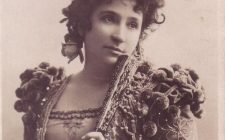
Madame Melba
During the First World War Australia’s most famous opera singer Nellie Melba was known simply as Madame Melba. Born Helen Porter Mitchell, (1861-1931) in Richmond, Melbourne, she studied singing and left Australia for London and Paris in 1886 to continue her career, changing her name to Melba in honour of the city of her birth. She sang in all the opera houses of Europe as well as London and New York returning to Australia in July 1914 as war in Europe loomed. She made Melbourne her home and set up a music school but also turned to fundraising to help the war effort taking part in charity concerts throughout the country. Her performances, for which she took no fee, raised an incredible £100,000 and for ‘services in organising patriotic work’ she was created Dame Commander of the British Empire (DBE) by King George V in early 1918.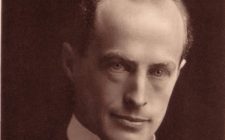
Mawson, Douglas
Sir Douglas Mawson (1882-1958) was a geologist who in 1914 was embarking on a worldwide lecture tour promoting his recent Australian Antarctic Expedition (AAE) of 1911-1913. This first major scientific investigation by Australians beyond their shores had earned him a knighthood in the King’s Birthday Honours list that June. His talks would have been received warmly in Adelaide for he had been a University of Adelaide lecturer since 1905, while there were also several young Adelaide graduates on the team such as Cecil Madigan, Percy Correll, Morton Moyes and Alexander Kennedy. Adelaide audiences paid from 2 to 5 shillings for their seats, with proceeds helping to eliminate the debt of the expedition. Mawson continued his tour in other Australian cities and New Zealand and then back to London via New York. No doubt Mawson would have thrilled onlookers with his experiences of the frozen south, ‘illuminated by unique colored moving pictures’ as well as an ‘unrivalled series of colored views’. Mentioned in several newspaper reports was the extraordinary story of his survival after sledging alone across the ice for a month after losing first one dog handler, Ninnis down a crevasse and then the second, Mertz from exhaustion.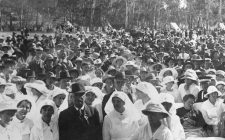
Seager, Alexandrine
In business before the war, Mrs Alexandrine Seager had the administrative and organisational skill required for running the Cheer Up Society, which she founded in, after visiting Morphettville camp to see her son in the Australian Imperial Force in November 1914. With the support of the editor of Adelaide newspaper, The Register, she appealed to South Australian women to join the Society, which aimed to provide 'general comfort, welfare, and entertainment' for soldiers. Initially, they visited camps, arranged entertainments, such as concerts and sent comforts to the front. As the wounded began returning from Gallipoli, they provided comfort and care. From 1915 they were based in a large tent behind the Adelaide Railway Station, which was replaced by the Cheer-Up Hut in nearby Elder Park (opened on 14 November, 1915). The Society had eighty country branches, and a key aspect of their fundraising was the annual Violet Day Appeal (first held on 2 July 1915). She was also instrumental in the foundation of the South Australian Returned Soldiers’ Association. For further information, visit History SA's online resource, Adelaidia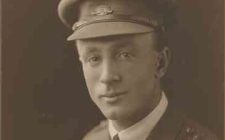
Smith, Ross
Ross Smith spent part of his childhood growing up on Mutooroo Station, near Broken Hill. He and his bother Keith were educated in Adelaide, and in 1910, Ross joined the Australian Mounted Cadets and was selected to represent South Australia in an international tour. He enlisted in August 1914, joining the 3rd Light Horse Brigade and served in the Dardanelles and later at Romani. In 1917 he joined the Australian Flying Corps. After the war, Ross and Keith took up the Australian government's challenge to flying from England to Australia in less than 30 days. They were successful in the challenge, and were knighted for their efforts. Sadly, Ross Smith died in a flying accident in England in 1922, testing an aircraft the brothers were planning to use to fly around the world.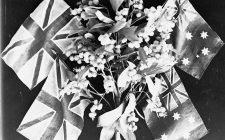
Terrell, Frederick Leopold
After working as an iron moulder, 25 year old Frederick Leopold (Leo) Terrell was frustrated by the lack of work in South Australia and, enlisted for service for the Royal Australian Naval Bridging Train at Keswick on 27 March, 1915. After several months of training, Terrell embarked from Australia on 3 June 1915 and served with the AIF at Gallipoli, landing at Suvla Bay. He later served with the 12th Field Artillery Battery on the Western front in Europe.